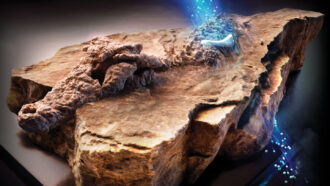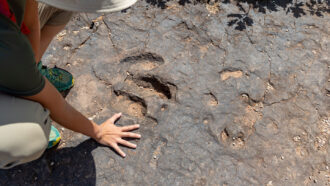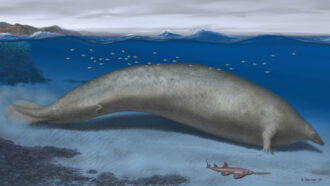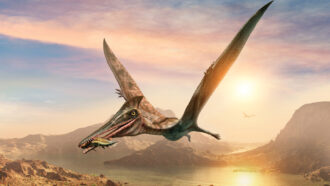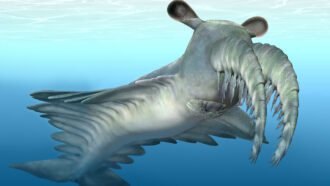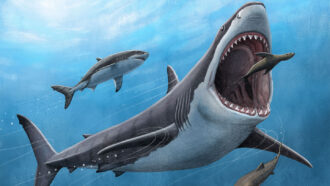These prehistoric fliers likely nested together
Especially rare: Unearthed nest contained five intact — and unsquished — eggs
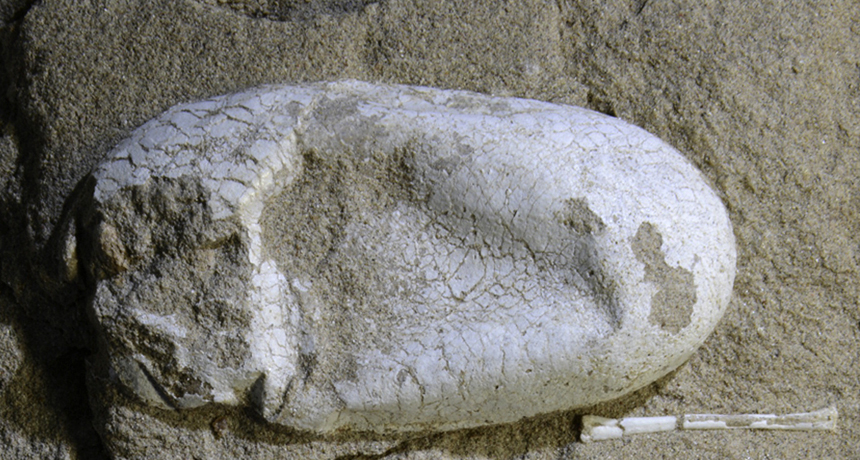
Closeup of the fossil pterosaur egg, the first found that hadn’t been crushed.
Maurilio Oliveira
Scientists in China have unearthed a vast graveyard of eggs and bones from a newfound species of ancient flying reptiles. Their find suggests that this pterosaur probably nested in groups.
The discovery cracks open an old question about pterosaur life: Did these animals travel in flocks or fly solo?
The skeletons of these animals are fragile. That has meant that scientists rarely found intact bones. Fossil eggs are even rarer. Until now, scientists had found only four isolated, squished ones. So the lifestyle of the winged reptiles was mostly a mystery.
And that’s what makes contents of the newfound nest from northwest China so interesting. A research team led by paleontologist Xiaolin Wang of the Chinese Academy of Sciences in Beijing unearthed the fossils of about 40 pterosaurs in 2005.
This narrow-skulled species spouted Mohawk-like crests. The scientists named them Hamipterus tianshanensis for the Tian Shan Mountains. They are not far from where the new fossils were found.
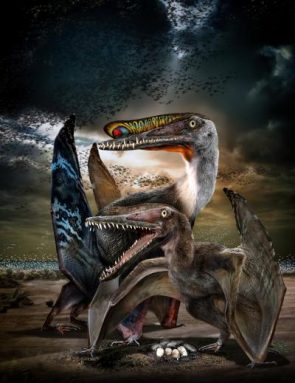
Adults would likely have buried the eggs in a nest of sand, much as many turtles do today. The large fossil cache contained remains of pterosaurs with a wingspan of up to 3.5 meters (roughly 11.5 feet).
Because the fossil eggs were found scrambled among the bones of so many pterosaurs, Wang and colleagues think the animals were a social bunch. Instead of ranging freely as loners, these pterosaurs probably laid eggs together. In this case, they also died together, probably during a big storm, Wang says. This would have happened some 120 million years ago, in the early Cretaceous period.
His team describes its findings in the June 16 Current Biology.
Power Words
crest (in biology) Some feature on the head — feathers or a bony prominence, for instance — often on a bird or dinosaur.
fossil Any preserved remains or traces of ancient life. There are many different types of fossils: The bones and other body parts of dinosaurs are called “body fossils.” Things like footprints are called “trace fossils.” Even specimens of dinosaur poop are fossils.
membrane A barrier which blocks the passage (or flow through of) some materials depending on their size or other features. Membranes are an integral part of filtration systems. Many serve that function on cells or organs of a body.
pterosaur Any of various extinct flying reptiles of the order Pterosauria. These animals lived 245 million years ago to 65 million years ago. Although not true dinosaurs, they lived during the reign of dinosaurs. Among members of this order were the pterodactyls of the Jurassic and Cretaceous periods, which were characterized by wings consisting of a flap of skin supported by the very long fourth digit on each forelimb.


